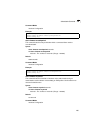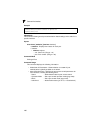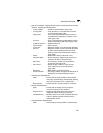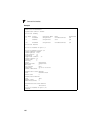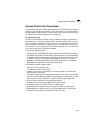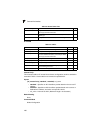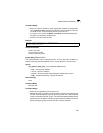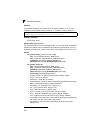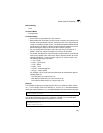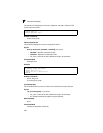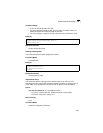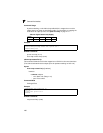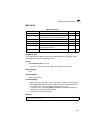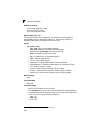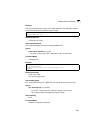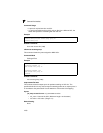
Access Control List Commands
4-93
4
Default Setting
None
Command Mode
Extended ACL
Command Usage
• All new rules are appended to the end of the list.
• Address bitmasks are similar to a subnet mask, containing four integers from
0 to 255, each separated by a period. The binary mask uses 1 bits to indicate
“match” and 0 bits to indicate “ignore.” The bitmask is bitwise ANDed with the
specified source IP address, and then compared with the address for each IP
packet entering the port(s) to which this ACL has been assigned.
• You can specify both Precedence and ToS in the same rule. However, if
DSCP is used, then neither Precedence nor ToS can be specified.
• The control-code bitmask is a decimal number (representing an equivalent bit
mask) that is applied to the control code. Enter a decimal number, where the
equivalent binary bit “1” means to match a bit and “0” means to ignore a bit.
The following bits may be specified:
- 1 (fin) – Finish
- 2 (syn) – Synchronize
- 4 (rst) – Reset
- 8 (psh) – Push
- 16 (ack) – Acknowledgement
- 32 (urg) – Urgent pointer
For example, use the code value and mask below to catch packets with the
following flags set:
- SYN flag valid, use “control-code 2 2”
- Both SYN and ACK valid, use “control-code 18 18”
- SYN valid and ACK invalid, use “control-code 2 18”
Example
This example accepts any incoming packets if the source address is within subnet
10.7.1.x. For example, if the rule is matched; i.e., the rule (10.7.1.0 & 255.255.255.0)
equals the masked address (10.7.1.2 & 255.255.255.0), the packet passes through.
This allows TCP packets from class C addresses 192.168.1.0 to any destination
address when set for destination TCP port 80 (i.e., HTTP).
Console(config-ext-acl)#permit 10.7.1.1 255.255.255.0 any
Console(config-ext-acl)#
Console(config-ext-acl)#permit 192.168.1.0 255.255.255.0 any
destination-port 80
Console(config-ext-acl)#



